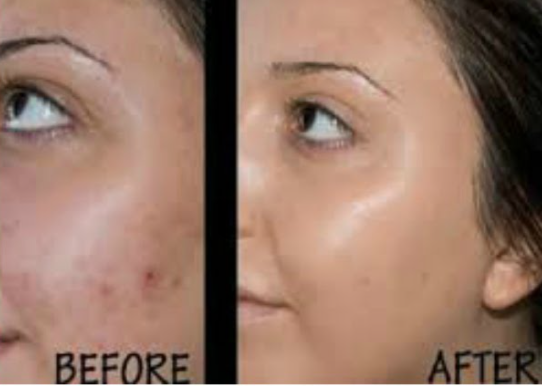Aloe vera is a cactus plant from the Liliaceae family. It is one of the most commonly used herbal treatments for topical skin problems and thus, is widely utilised in cosmetics and beauty products. Management of constipation, diabetes, and other health issues are some other benefits of aloe vera.
In this article, we have discussed how aloe vera can help treat a range of skin disorders or injuries.

Active Ingredients in Aloe Vera that Help the Skin
When split off from the remainder of the plant, aloe secretes a clear gel that can be applied topically to heal wounds and soothe skin. This gel contains 75 active ingredients that can help soothe and treat the skin. The various active ingredients are as follows:
- Vitamins: It contains antioxidant vitamins A, E, and C. It also has folic acid, vitamin B12, and choline in it. These ingredients are proven to be very beneficial for the skin (refer to the video linked below to know more).
- Enzymes: Aliiase, amylase, alkaline, phosphatase, bradykinase, carboxypeptidase, cellulase, catalase, peroxidase and lipase. When applied topically to the skin, bradykinase helps minimise excessive inflammation, while the others aid in the breakdown of carbohydrates and fats.
- Minerals: Calcium, copper, chromium, selenium, manganese, magnesium, potassium, zinc, and sodium, are some of the minerals present in aloe vera gel. They are required for the proper functioning of many enzyme systems in various metabolic pathways, and a few of them are antioxidants.
- Hormones: Gibberellins and Auxins help in wound healing and have anti-inflammatory action.
- Plant steroids: Aloe vera contains Cholesterol, beta-sisosterol, campesterol, and lupeol. All of these steroids have anti-inflammatory qualities, and lupeol has antibacterial and analgesic characteristics.
- Salicylic acid: Salicylic acid has antibacterial and anti-inflammatory effects.
- Lignin: This inert material, when added to topical therapies, helps improves the penetrative impact of the other chemicals on the skin.
Skin Benefits of Aloe Vera
Aloe vera has several skin benefits due to the active ingredients mentioned above. Eleven such benefits are listed below:
1. Acts as a moisturiser
Aloe moisturises the skin without leaving it greasy, making it ideal for people with oily skin. It also helps to calm the skin, making it smooth and flawless.
2. Prevents ageing
Aloe vera includes a variety of antioxidants, including beta-carotene, vitamin C, and E, which can help improve the skin’s natural firmness and keep it hydrated.
3. Treats burns
Applying aloe vera to a burn can aid in healing by lowering inflammation, increasing circulation, and limiting bacterial growth.
4. Soothes sunburns
Aloe vera is relaxing, hydrating, and cooling. This makes it an excellent and low-cost option for relieving the pain of minor sunburns at home.
5. Treats minor abrasions
Aloe vera can bring relief to the affected area for immediate pain relief and burning sensations. However, aloe should never be applied to an open wound.
6. Treats eczema
Aloe’s hydrating properties can help relieve dry, itchy skin associated with eczema. Aloe vera gel may also help with seborrheic dermatitis. While this oily eczema most usually affects the scalp, it can also be found on the face and ears.
7. Treats psoriasis
As with eczema, aloe vera may help relieve psoriasis inflammation and irritation. Apply aloe vera gel to the affected region of the skin twice daily for optimal results.
8. Repairs cuts

Aloe vera’s molecular structure promotes wound healing and scar reduction by increasing collagen and combating germs.
9. Treats frostbite
Frostbite is a dangerous ailment that necessitates immediate medical attention. While aloe vera gel has traditionally been used to treat frostbite, consult the doctor first.
10. Treats sores on lips
Cold sores, as opposed to canker sores, appear on the exterior of your mouth. Aloe vera may aid in the treatment of these sores.
11. Reduces acne and inflammation

Because of the anti-inflammatory properties of aloe vera, the gel may aid in the treatment of inflammatory acne, such as pustules.
In What Form Should You Use Aloe Vera for Skin Conditions?
The most effective type of aloe vera gel is found inside the leaves of an aloe plant. However, not everyone has an aloe plant in their home. In such circumstances, over-the-counter (OTC) products are equally effective. Look for a gel that specifies aloe vera as its key ingredient for the best outcomes. Aloe vera extracts, on the other hand, do not work as effectively as a gel for skin diseases. This is because the gel contains hydrating components that protect and repair the skin.
Recipes for Homemade Treatments Using Aloe Vera
Olive Oil and Aloe Vera Gel
Take some aloe vera gel, olive oil, and oatmeal and combine them in a bowl until they create a paste. Apply the paste to your face and leave it on for 30 minutes before washing with cold water.
Aloe Vera Leaf
Scrape the gel out by peeling off the outer layer of the aloe leaf. Scoop out all of the gel and gently massage it into your skin. The water content of the gel can keep your skin hydrated.
Lemon juice and Aloe Vera Gel
Take some aloe vera gel and mix it with some lemon juice. Massage the paste onto your face and rinse after 30 minutes.
Vitamin E and Aloe Vera
Mix 1 Vitamin E capsule with 1 tablespoon of aloe vera gel and use this mixture as an anti-ageing eye cream. Every night before going to bed, apply the mixture.
Aloe Vera and Coconut Oil
Whisk aloe vera gel and organic coconut oil to create a fluffy mixture. Massage this mixture into stretch marks and leave overnight. Continue this treatment till the stretch marks fade.
Final Thoughts
Aloe vera is a well-known vitamin-rich plant with skin-healing capabilities. For many skin disorders, such as eczema, rosacea, or minor cuts, aloe vera is safe to apply on the face. However, if you have never used aloe vera before, proceed with caution. Begin by applying a little bit of the herb to your skin in a location other than your face. Allow at least 24 hours before testing for an allergic reaction. If you don’t notice any problems, you can start using it in higher amounts.
For more informative content visit Podium School.
Share with your friends





